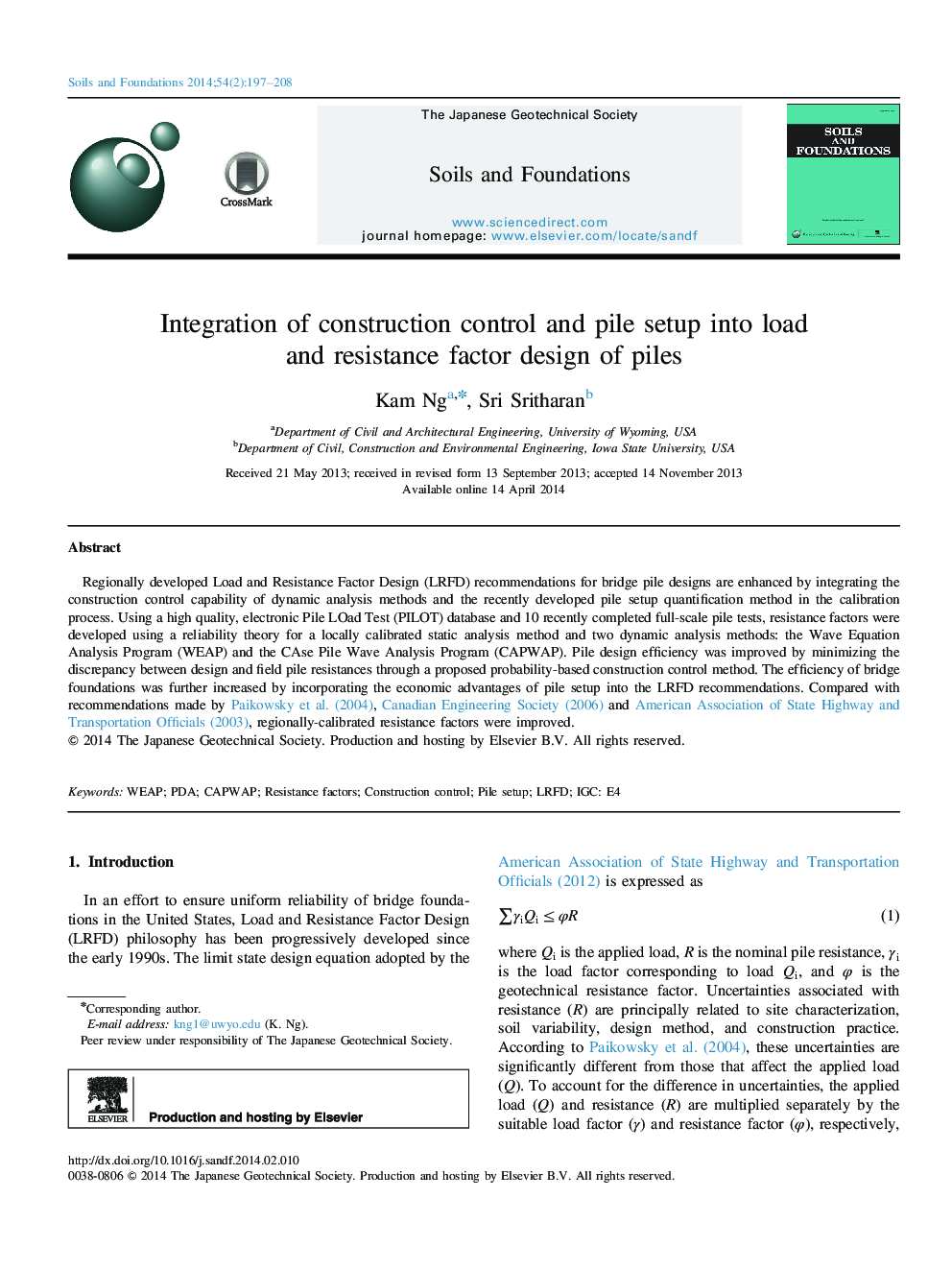| Article ID | Journal | Published Year | Pages | File Type |
|---|---|---|---|---|
| 307228 | Soils and Foundations | 2014 | 12 Pages |
Regionally developed Load and Resistance Factor Design (LRFD) recommendations for bridge pile designs are enhanced by integrating the construction control capability of dynamic analysis methods and the recently developed pile setup quantification method in the calibration process. Using a high quality, electronic Pile LOad Test (PILOT) database and 10 recently completed full-scale pile tests, resistance factors were developed using a reliability theory for a locally calibrated static analysis method and two dynamic analysis methods: the Wave Equation Analysis Program (WEAP) and the CAse Pile Wave Analysis Program (CAPWAP). Pile design efficiency was improved by minimizing the discrepancy between design and field pile resistances through a proposed probability-based construction control method. The efficiency of bridge foundations was further increased by incorporating the economic advantages of pile setup into the LRFD recommendations. Compared with recommendations made by Paikowsky et al. (2004), Canadian Engineering Society (2006) and American Association of State Highway and Transportation Officials (2003), regionally-calibrated resistance factors were improved.
